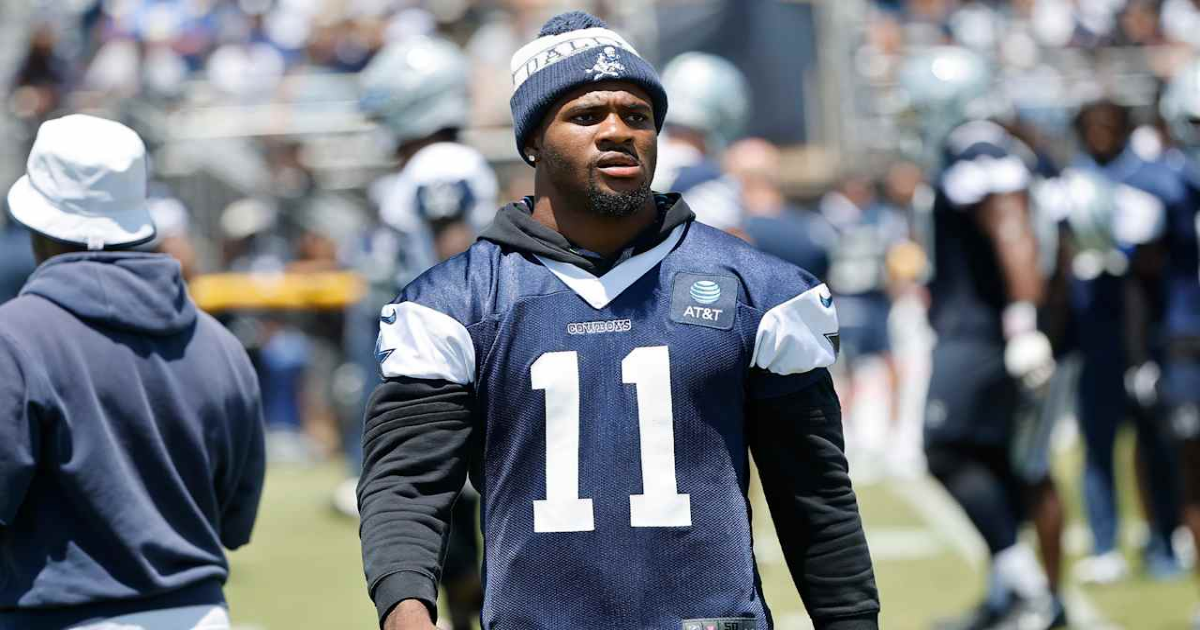OXNARD, Calif. – On Friday morning, Cowboys All-Pro defensive end Micah Parsons released a statement on social media where he said he personally requested a trade out of Dallas to team COO/co-owner Stephen Jones.
Parsons, who is heading into the final year of his rookie contract, has been seeking an extension with the team over the offseason to remain in Dallas. It’s been a process full of friction and frustration on both sides and has now amounted to a situation that has many layers.
The first layer is this: There’s a difference between requesting a trade, and being traded.
As it stands, the Cowboys have shown no interest in moving Parsons, and it’s unlikely that changes. Why would they? Parsons has been one of the most prolific pass rushers in the league over his first four seasons, one of only two players in NFL history to register 12 or more sacks in each of his first four NFL seasons, along with Hall of Famer Reggie White.
Players like that don’t come around often. And the Cowboys know that.
“We love Micah,” Stephen Jones said in December. “I can’t imagine there’s a scenario where he’s not wearing a star on his helmet.”
The Cowboys are the side of the equation that has most of the leverage in the negotiation as it stands, which leads into the second layer. Parsons is still under contract, set to receive $24 million as part of his fifth-year option in 2025. After that, the team has the ability to franchise tag Parsons twice, with the projected price tag coming in at around $26.5 million next season, and $31.8 million the year after that.
With the current outlook of the pass rusher market, notably with Pittsburgh’s T.J. Watt signing a three-year, $123 million extension good for $41 million per year, those numbers are noticeably less than what the Cowboys would have to pay Parsons if they decided to make him the highest paid non-QB in the NFL.
Does that mean the Cowboys will for sure franchise tag Parsons twice? Not necessarily, but they’ve shown that they’re not afraid to use that tactic. Just look at Dak Prescott, who was tagged in 2020 and again in 2021 before signing a four-year, $160 million extension.
The third layer involves, or maybe more can be more accurately described as a lack of involvement, with Parsons’ agent David Mulugheta. Back in April, Cowboys owner and general manager Jerry Jones told reporters at league meetings that he and Parsons had held discussions and come to agreements on most aspects of the contract, which signaled that Jones considered those conversations a negotiation.
“I’m the one who has to sign the check and Micah’s the one that has to agree to it,” Jones said. “That’s the straightest way to get there is the one writing the check and the one agreeing to it talking, and that’s the principle that’s involved here.”
Clearly based on Parsons’ statement today, he didn’t view those conversations the same way and wanted Mulugheta to get involved in the process. There hasn’t been much communication between the Cowboys front office and Mulugheta, which is part of the holdup in the entire situation.
It all leads to a difference in philosophy: Jones viewed his conversations with Parsons as a negotiation so why would they change their deal if he and Parsons agreed to most of the terms? Conversly, Parsons didn’t see those conversations the same way, and why would the Cowboys not include Mulugheta in conversations considering he’s his agent, and one they’ve worked with in the past and have respect for?
That brings us to the fourth, and arguably most important layer: Leverage. It’s what negotiations are all about.
As mentioned earlier, the Cowboys have leverage in the sense that they have Parsons under contract and can franchise tag him twice if they desire to do so. That’s not to say Parsons is without leverage in this spot, but since he is under contract, if the Cowboys don’t trade him and he opts to sit out of games, he’ll lose a significant amount of money.
So, what can you do to not only try and swing some more leverage back on your side but also spark up contract conversations again? Do what Parsons did, and request a trade. Again, requesting a trade and honoring a trade request are very different, as the Cleveland Browns and Myles Garrett exhibited earlier this offseason.
Garrett, the reigning defensive player of the year, requested a trade out of Cleveland on February 3, releasing a statement on social media just like Parsons did. The Browns made it clear they weren’t going to trade him.
Thirty-four days later, Garrett signed a four-year, $160 million extension with the Browns.
Sure, every contract situation and negotiation is different. At the end of the day, however, history tells us that trade requests don’t always mean the end of a road between a player and a team. That could very well be the case with Parsons and the Cowboys.
Now, it all comes down to who budges first. Will Parsons cave and play or will he sit out of games and lose his game checks? Or will Jerry Jones and the Cowboys repeat some of their recent history, agreeing to extensions after training camp and before the season?
